
Masses of mobulas and a reunion with friends drew us down to Baja in early June.

The Sea of Cortéz (also known as the Gulf of California, both names dating back to 16th century Spanish maps) is dotted with sparsely populated and aridly beautiful islands.
In addition to me, Steve and Greg, we met up with longtime San Diego friends Nancy and Gerry and Hawaii based friends Bob and Debbie. Gerry’s sister Lori and her husband Dennis joined us from Florida and Bob and Debbie’s friends and neighbors from Hawaii, Mark and April, rounded out our group. Bob and Debbie and Nancy and Gerry met each other years ago on a dive trip to Galapagos and we have made multiple trips with this quartet over the years (muck diving in Lembeh Strait, Raja Ampat, Dominican Republic for humpback whales, Svalbard for Steve’s 60th birthday, South Africa for a sardine run coinciding with our 20th wedding anniversary, the Channel Islands). A number of these trips were arranged by our friend, dive travel specialist Cindi LaRaia, who secured this boat and completed our party. We had snorkeled with her in January, communing with Dominica’s amazing sperm whales.
Nancy and Gerry had enjoyed two prior versions of this trip, on the same live aboard boat two years before (Nautilus’ Gallant Lady) and land-based from La Ventana with their niece one year ago.
Our experience with mobulas was relatively limited. Our most dramatic prior encounter was in Raja Ampat, Indonesia in 2017, on a trip with Greg, Kerri and Hergen, with hunting mobulas whipsawing a massive sardine school.
More recently, on a fall Baja dive trip on the Rocio del Mar in 2022, we did a shallow night dive where strong lights on the water’s surface concentrated plankton and drew in a careening aggregation of night feeding mobulas.
The shape of a mobula is distinctive, resembling the larger manta ray, with which it is grouped as a Myliobatiform (mobulids), one of four orders of Elasmobranchs (the other three being rajiformes (skates), torpediniformes (electric rays), and rhinopristiformes (guitarfish). Mobulas are also known as devil rays. There are 10 species of mobulids in the world, five of which can be found in Baja’s waters. The large aggregations we hoped to see would be Mobula munkiana, named for a famous San Diegan and Scripps Institute of Oceanography research scientist, Walter Munk, who died in 2019. We had a chance to meet him in his La Jolla Shores historically designated home in his later years, on a mid century modern house tour organized by a late friend of ours and neighbor of Munk’s, Al Jaffe. In English, these devil rays are usually designated Munk’s pygmy devil ray.
Friday, May 31, 2024
This departure day was momentous for us. In the morning while finishing packing, I authorized the wire to pay for the first half of the Paris apartment share we’d been mulling over the preceding month.
David (an amiable driver new to us, a referral from Rosa ($100 plus $20 tip) ) picked us up early, well before our 1 pm scheduled departure. Nancy and Gerry were already at CBX with Lori and Dennis, in from Boca Raton, Florida. It was Gerry’s smart idea to fly to La Paz via Tijuana and the Cross Border Crossing (CBX) in order to skip the 2.5 hour drive from Cabo to La Paz. No traffic impeded our progress and we arrived in plenty of time for the walk down a marbled corridor from the US into the Tijuana airport.
In addition to being cheaper than Alaska’s non-stop flight to Cabo, Volaris allowed 2 carry-ons AND a personal item and 3 pieces of checked luggage between us weighing 55 pounds apiece.
The cab ride in from the airport (550 pesos, about $30 USD) along the seaside sweep of the Malecón took us past a horrifying sight, a completely derelict Hotel Los Arcos, covered with graffiti and badly decayed, boarded up, neglected and fenced. Miguel the cab driver said it had been closed for almost 15 years. We stayed there on our very first trip to Baja, also organized by Baja Expeditions, overnighting before our first live-aboard dive trip on the now defunct Don Jose, notable also for being the trip on which we first met Greg, 30 years ago.

La Paz’ seaside promenade, the Malecón, is dotted with sculptures reflecting the Sea of Cortez’, including this whale shark.
We walked the Malecón in the evening, meeting up with Nancy, Gerry, Lori and Dennis at Tres Virgenes, a restaurant they knew from a prior trip, a couple blocks off the Malecón. We loved the enclosed and quiet patio but thought the table-side Caesar salad was overdressed.
Our ocean view room ($300) at Casa al Mar turned out not to be a great choice, at least on a Friday night, as we had to stay up late to wait out the noisy cars cruising up and down the Malecón, some blasting music. It was a suite, with an unnecessary kitchen and sitting area. Some of that space would have been better allocated to enlarging the comparatively small bathroom. I think one of their $100 patio rooms would have been quieter and a better choice. While walking around, we did find a potential future alternative a few blocks off the seaside, an attractive boutique design hotel, Casa Bo.
Saturday, June 1, 2024
We slept in but mobilized around 10 am. We walked in intense heat to lunch. The night before, we’d scouted a good looking bakery and coffee shop, Paradiso, but there was a wait for a table. The tree-shaded tables outside Nomada Fresh & Organics drew us down the street. A young author, Jaime Romero Robledo, peddled his self-published books on the street.
Afterwards, Steve wanted to buy tequila. We were glistening and dripping by the time we arrived at one of our server’s suggestions, but saw no evidence of such an establishment. We were on the verge of buying a bottle of Casa Dragones at a liquor store we found on the Malecón when Steve saw an array of opened bottles of tequila and tiny plastic cups for sampling on a sideboard. After tasting a few of the offerings, we decided on a sipping tequila half the price of super-premium priced Casa Dragones.
In the morning, on the off-chance she and Mike were in town and not out on their boat, I had texted Sherry. Happily, they were in town provisioning the boat. We visiting with them late afternoon on the Ambar III, walking to Marina de la Paz, after storing our luggage at Baja Expeditions. The two of them and the boat did not appear to have aged since we last saw them in 2017. They were heading out on the boat the following Monday. Photo pro Leo Gonzalez, who was also on our last Ambar III voyage, called while we were making the arrangements and came over to visit as well. Sherry had yummy snacks, a delicious hummus, cheese and a cooling gazpacho, bringing back great memories of many delicious meals on board. Just before 6:30 pm, I glanced at Steve’s watch, and realized it was time for us to head back to Baja Expeditions. The bus from Cabo, carrying Cindi, Greg, Bob, Debbie, Mark and April, was being loaded when Sherry called Leo (who drove us back) to say Steve forgot his water bottle on the boat. If it was any other water bottle, we probably would have let it go, but this was a special one, capable of filtering iffy sources of water. Leo made a swift return trip to the nearby marina and reunited Steve with his bottle just as the bus was ready to depart for the Gallant Lady’s marina, on the other side of La Paz.
The bus’ orange tinted sun shades over the upper halves of the windows lent the effect of the most intense sunset ever. I remembered the morning version of this illusion from our Baja Expeditions gray whale trip the prior year.
On board the Gallant Lady, we met our capable crew for the week, including dive masters Juan David and Nikke. The evening was capped off by a double chocolate cake celebration, of Greg’s recent 60th birthday and Bob completing his 5000th dive.
Sunday, June 2, 2024
When I ventured out of our room, the Nautilus, just off the salon, the dining room was deserted. A mother humpback whale and calf had drawn all of the attention to the bow of the boat. Mark managed to obtain a nice shot of a half-breach by the baby.
Bob appeared in the dining room, resplendent in Tiffany blue, announcing he was channeling orcas. His T-shirt, emblazoned with a huge orca, was paired with matching orca print shorts.

Inde 2, being towed behind the Nautilus’ Gallant Lady, when we were not aboard her on our daily sea safaries.
Bob’s ensemble did not have the desired effect that day, but we did see mobulas in the morning, a small group of perhaps 6, popping up from the water, their wings slapping the surface. It isn’t really known why mobulas propel themselves periodically out of the water in acrobatic leaps-speculative theories include communicating via the resounding slap of their landings on the water’s surface, advertising their sexual prowess for a potential mate, ridding themselves of parasites and just for the fun of it.
Holding out for a larger group and better shooting situation, we scanned the seas, occasionally sighting scattered sea lions.
Large groups of dolphins were present but when we tried to intersect with them in the water, they were elusive.
Our morning essentially was a practice run, testing our weighting. Most were wearing 5 mm wetsuits, which did not feel like overkill in the chilly high 70s water.
The afternoon shaped up to be a slow one, until…it wasn’t. Cruising the La Ventana area, a turtle popped up to the surface, distant sea lions excited momentary curiosity but nothing seemed to be panning out.
At last, surface indications of a group of mobulas were spotted. When we slipped into the water, I bonked my head lightly on the bow of the boat, as we whirled around in the water, trying to get a bearing on where the animals were.
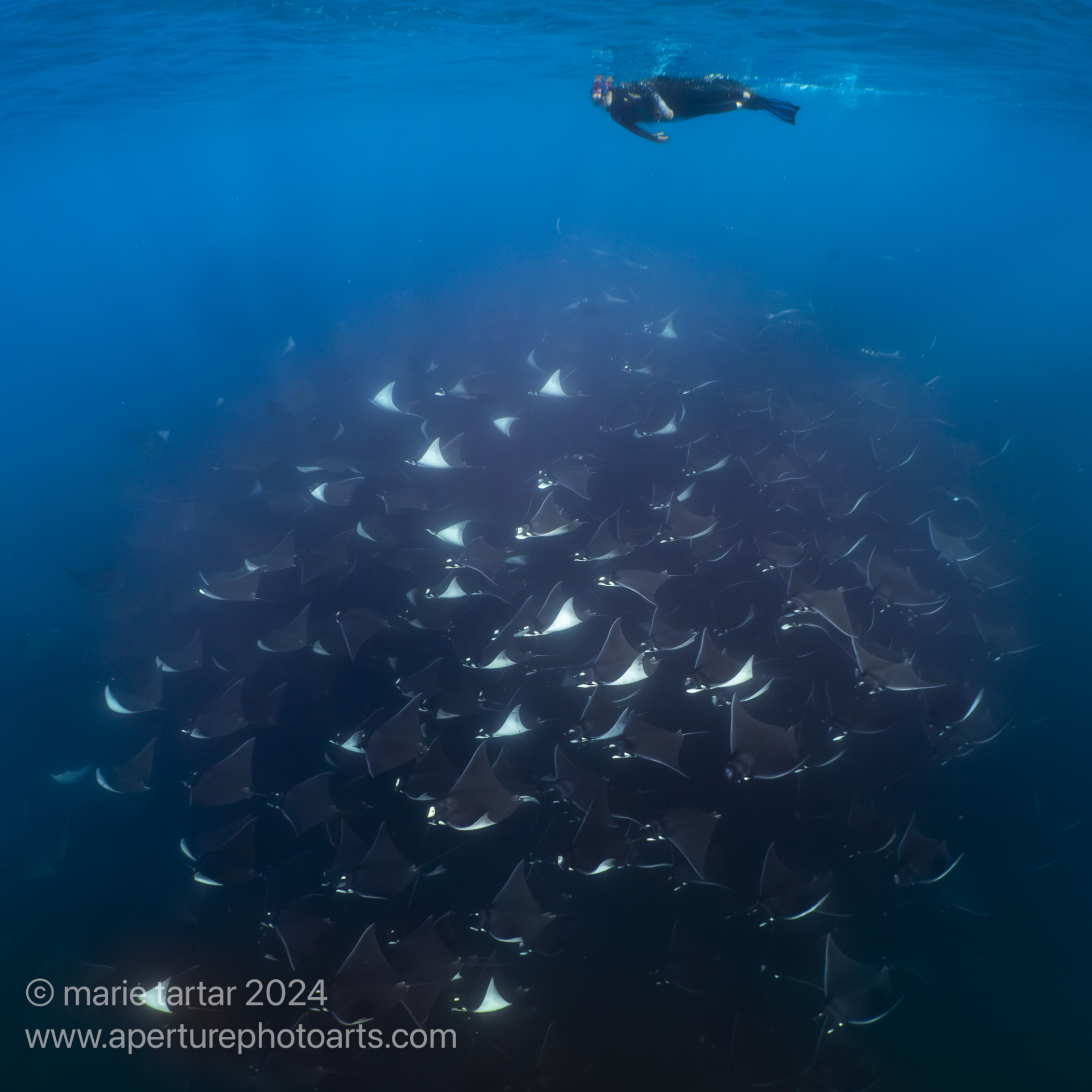
April, a former environmental scientist turned acupuncturist, snorkels above a massive ball of pygmy devil rays or mobulas in Baja, Mexico. The cloudy appearance of the water presumably reflects a high concentration of plankton, the food source of choice of mobulas.
A huge school was below us, cruising in a slow circle, at depth, maybe 30 feet beneath the surface, around and around like ballroom dancers in a dreamy slow waltz.
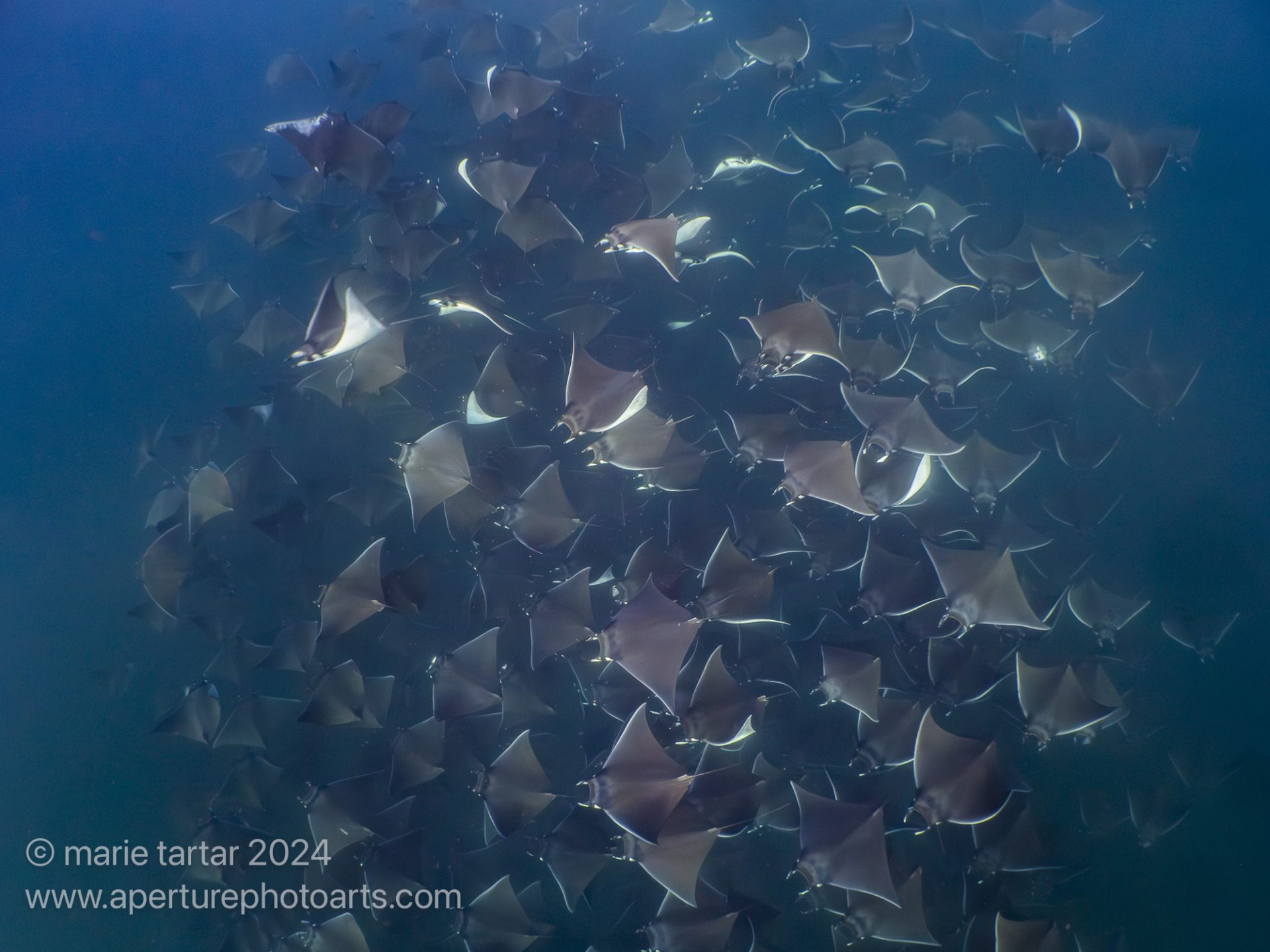
At the end of our first day, a long and mostly fruitless day of searching, we were rewarded by an hour of snorkeling with a slowly circling feeding group of mobulas. We had no idea how difficult it would be to replicate this experience. The rest of the week, we had brief glimpses of comparable schools but they quickly melted away into the murk.
The water was milky, presumably plankton rich and just the formula for attracting filter feeders. The group numbered in the hundreds and spiraled beneath us for over an hour, sometimes deep and indistinct, other times nearing the surface and more sharply etched against the blue water.
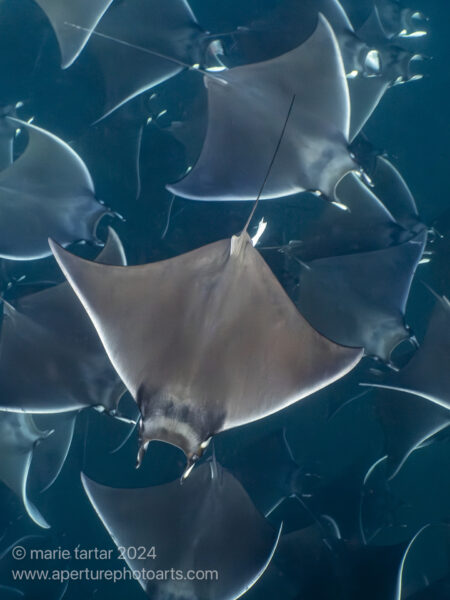
At times, the mobula mob sank in the water column, becoming indistinct; other times, they moved closer to the surface where their details became more defined.
After we finally re-boarded the skiff, happily exhausted from an amazing encounter, orders for cocktail hour were taken and radioed ahead to the Gallant Lady. Perla had our drinks waiting for us.
Monday, June 3, 2024
Despite Bob reappearing with his orca channeling T-shirt, most of this day was rather slow. In fact, we had no major sightings or encounters in the morning, despite Greg sending up his drone and the spotter plane circling overhead.
We did chase down a couple floating white objects. One proved to be a puffed up pufferfish. Another was a masked bobby, perched on a FAD (fish attraction device).

Masked booby (Sula dactylatra), a tropical seabird, in Baja’s Sea of Cortéz. We also saw brown and blue-footed boobies on this trip, but perched high up on rocky sea cliffs.
The afternoon was much the same, with fleeting pairs and small groups of mobulas, as well as beefy milkfish.
A boat on a collision course with me (which, wearing a hood with my head in the water, I never saw nor heard), was flagged down and slowed by our alert boatmen. I was following a group of mobulas after everyone else had re-boarded the Inde 2, but they quickly dematerialized in the gloom.
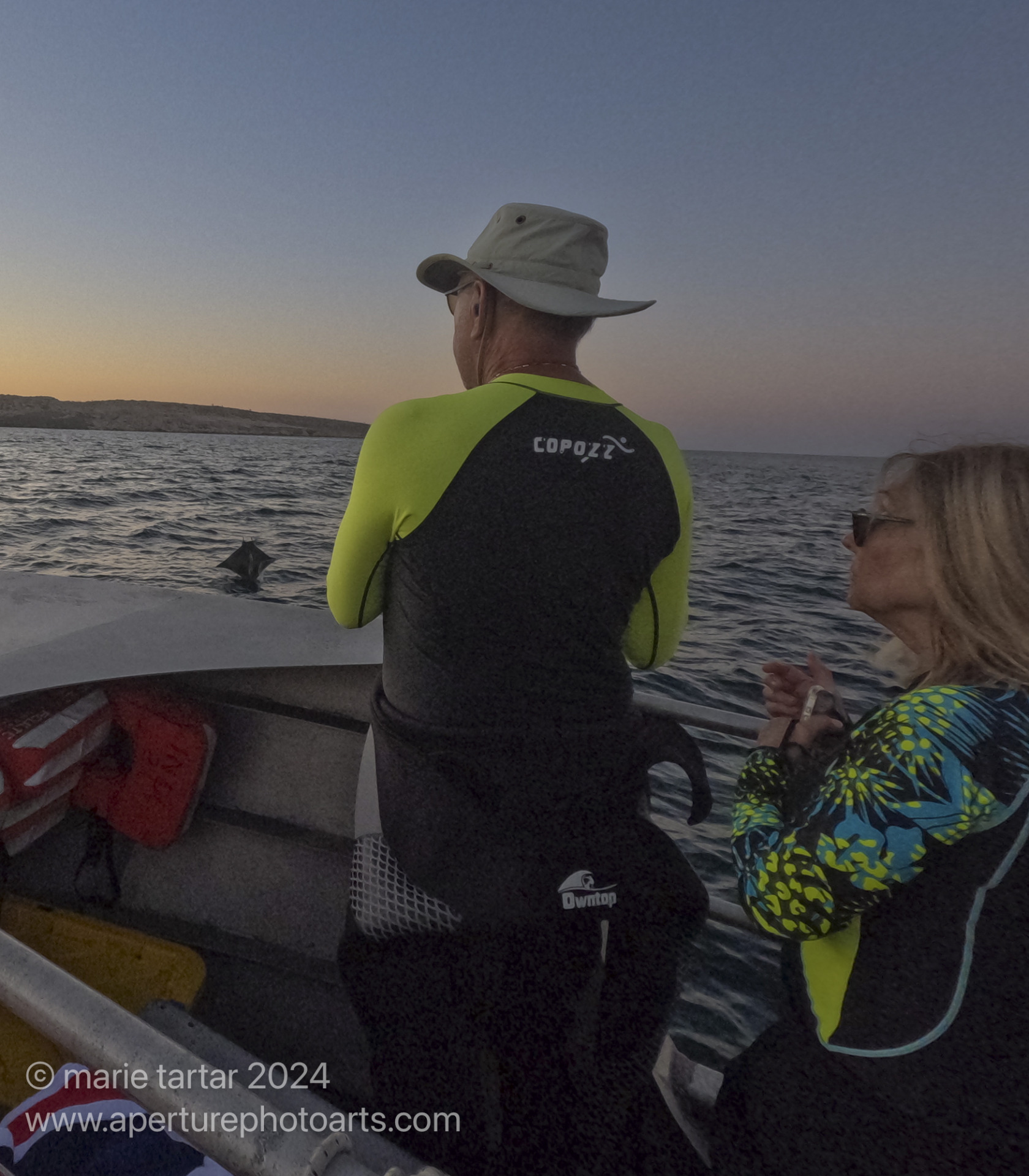
A mobula jumps out of the Sea of Cortéz as the afternoon light fades away, as Dennis and Lori look on from Inde 2, the Nautilus’ Gallant Lady skiff.
Only as the light was failing did we finally succeed in finding a large group of mobulas. It was so dark by then I could only focus on another snorkeler and hope my shots were in focus. Along the way, I saw two turtles, one of which started as it encountered me and abruptly veered away.
Tuesday, June 4, 2024
We spent the morning dodging wind, heading south.

Not all black flappy sightings on the surface in the Sea of Cortéz are mobulas, with random California sea lions out, chilling.
After a pizza lunch, we again boarded the skiff in the late afternoon and began searching for signs of mobulas. At last, surface slapping of their wings encouraged us into the water. April gave the surface signal that they were below (five extended fingers) but they quickly vanished, even before I entered the water.
Perla met us on the dive deck with tamarindo mescalitas as we disembarked, delicious consolation drinks.
Fajitas were on the menu for dinner, accompanied by carrot and ginger soup.
Wednesday, June 5, 2024
Most passed a restless night. Gentle rocking of a boat can be very soothing, but as Steve said, this overnight side to side motion was borderline violent.
Out on the water, this was another slow morning.
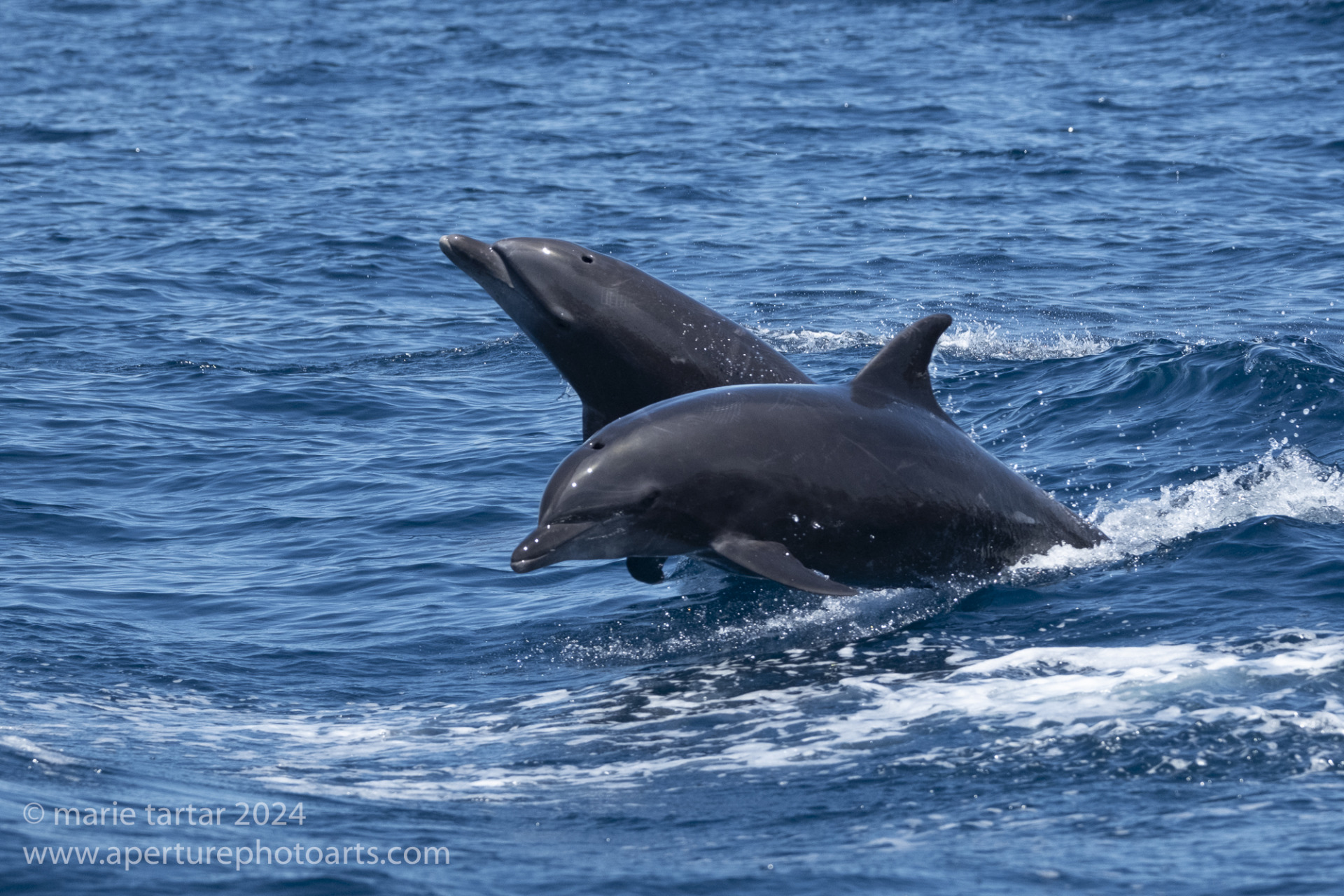
Bottlenose dolphins (Tursiops truncatus), always a delight, as they play in our boat’s wake in Baja.
An acrobatic group of dolphins gave us hope, enough to enter the water, but they disappeared instantly.
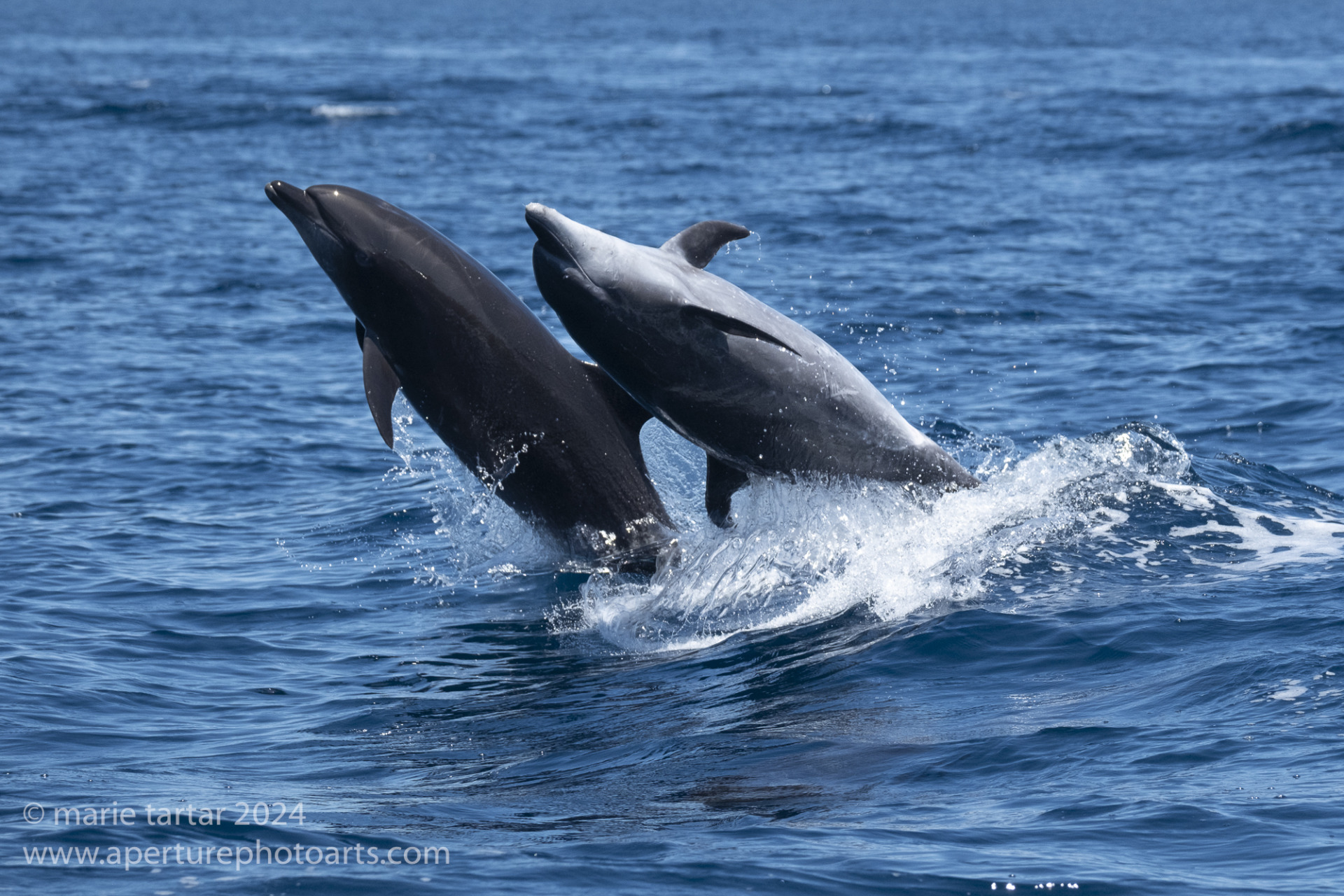
These bottlenose dolphins entertained us on our skiff but disappeared promptly when we tried to slip into the water with them.
It was a relief to be in the cool water after heating up all morning while searching from the Inde 2, clad in a 5 mm wetsuit, with gloves and a 3 mm hood.
After lunch (Baja fish tacos, with pico de gallo, guacamole and tortilla soup), we heard from the spotter plane that a whale shark had been sighted. Gerry launched his drone from the wheelhouse of the boat, trying to narrow in on it. He spotted only a turtle.
Out on the Inde 2, flying fish streaked across the smooth water’s surface, covering astounding distances. Dolphins leapt in the waves but disappeared when we approached close enough to slip into the water.
As the afternoon sun sank and glowed golden, we came to a gorgeous group of islets streaked with white “Baja snow” from frigates circling overhead. The barks of sea lions heralded our arrival at Los Islotes, a sea lion colony we have loved since our first trip 30 years ago. We last dived here from the Rocio del Mar in fall 2018. This was our first trip at this time of year. It was a surprise to see no other boats there. The explanation was that it is closed during mating season, from June 1-August 1 each year
Thursday, June 6, 2024
Another fruitless morning of looking and chasing began with Mark sighting a whale blow in the distance. This was confirmed, with a second blow nearby and a third whale a little way from the others, all quite distant. This roused us from the cool and air conditioned lounge out onto the bow and up onto the flying bridge. We flew the drone to search around, without even sighting a turtle.
Along the way, we saw a few pairs of mobulas hopping and popping but no activity sustained enough to investigate in the water.
Our boat cruise took us near a remote fishing village, San Evaristo, with circling frigates overhead and tropic cormorants and pelicans lounging on the shore rocks.
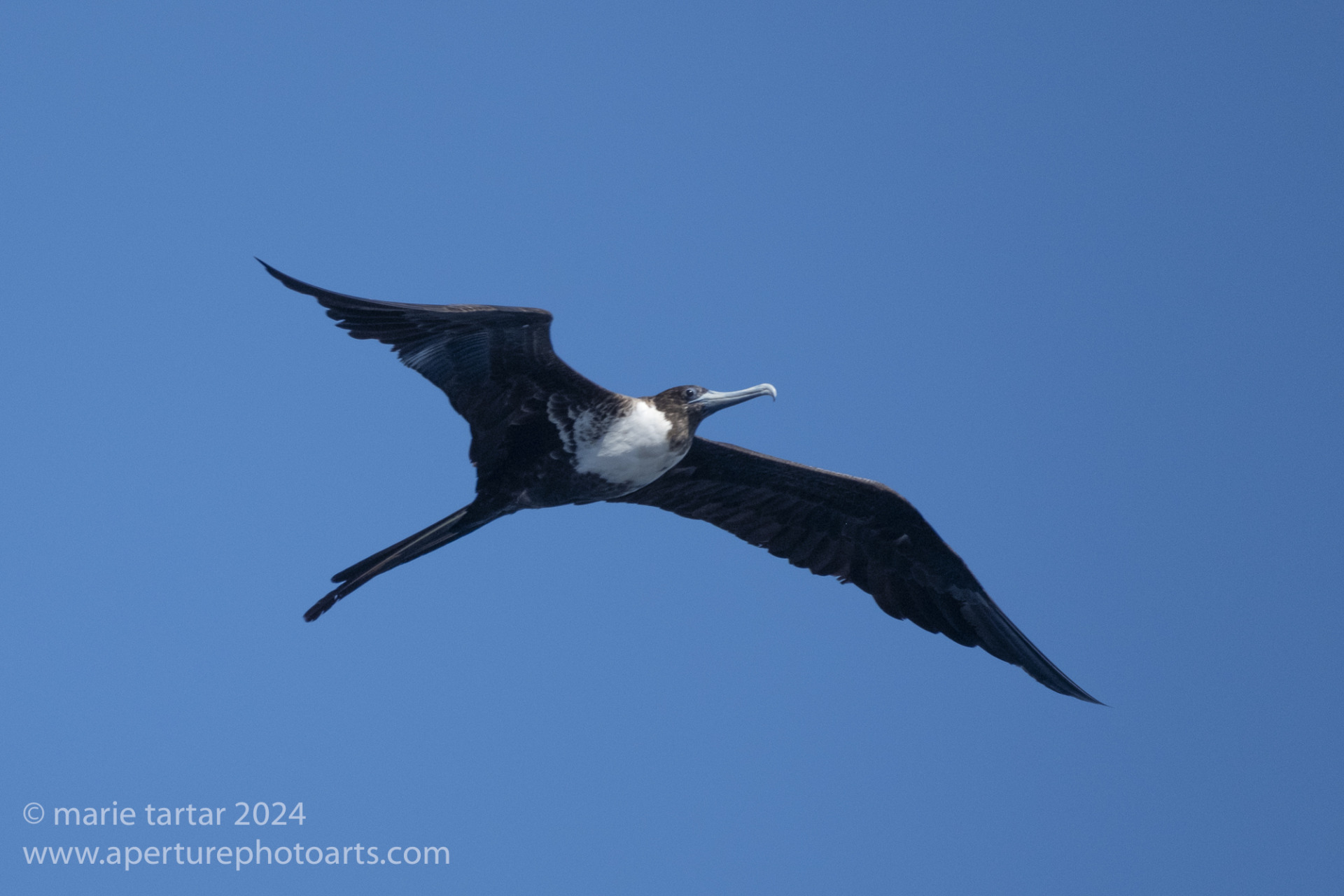
Magnificent frigatebird soars overhead in Baja’s Sea of Cortéz (adult female distinguished by dark head and white breast patch).
We spent a delightful late afternoon snorkeling at Las Animas, a sea lion rookery we dived in 2022.
Over the years, we’ve dived multiple times with sea lions, but have never snorkeled to photograph them. In addition to California sea lions, there were Guadalupe fur seals. Gerry, Nancy, Bob, Debbie, Mark and April had their dive gear with them and enjoyed a dive while we snorkeled. We left our gear at home, as well as our strobes, simplifying the packing for this trip.

Is there any activity more fun than swimming with pinnipeds? I’m hard pressed to think of one. We spent a delightful afternoon snorkeling with California sea lions and Guadalupe fur seals at Las Animas in Baja’s Gulf of California.
Curious pinnipeds hung upside down to peer at us, while others wrestled on the rocky shore and tumbled around in the shallow water.
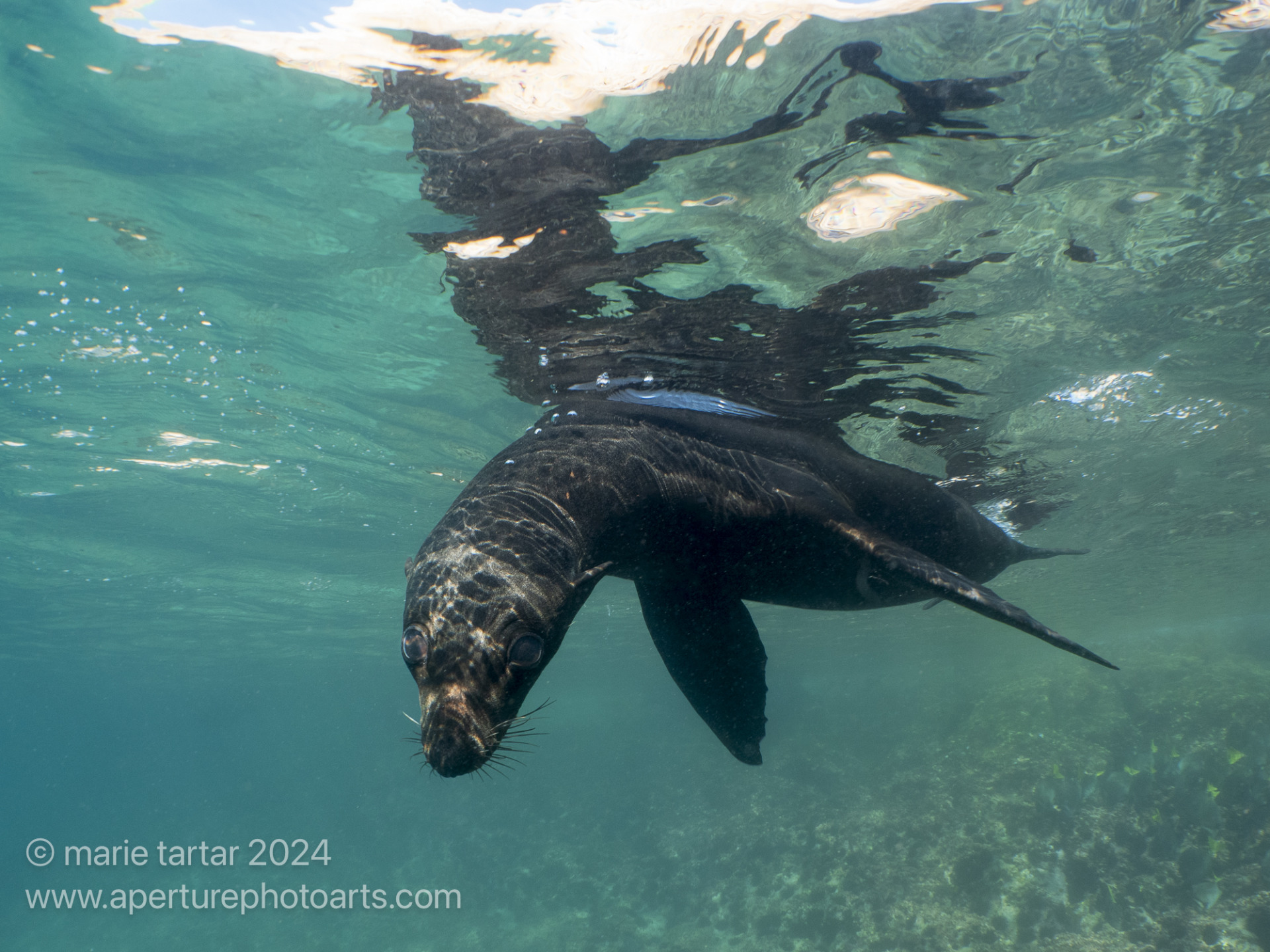
The most fun marine mammal? Pinnipeds, like this California sea lion in Baja’s Sea of Cortéz, are perennially curious.
Mating was seen too, with one amorous couple firmly attached to each other. The female appeared to try repeatedly to shake the male off, but he was clamped on determinately.
Friday, June 7, 2024
Our routine was changed up today. Instead of breakfast at 7 am and departure on the skiff afterwards, we boarded the Inde 2 at 7 am, in search of elusive mobulas in the depths. We did find one group, deep and on the move, which quickly lost even our fastest swimmers. After returning for variations of eggs Benedict for breakfast, we headed out on the Inde 2 after the spotter plane reported spying a group of orcas heading south.
All week, we had been hoping, but not counting on, seeing orcas. When Gerry and Nancy did this trip 2 years before, all groups but their voyage connected with orcas (7 out of 8 trips). Cindi had been doing her best to manifest them and Bob had been sporting his orca outfit daily.
We were not the only ones in pursuit. When we arrived in the area, there were 8 other boats converging. They were small, holding pairs and small groups of whale watchers and snorkelers, some from as far as La Paz and others from La Ventana. It was borderline chaotic, with the boats jockeying for position and hopscotching around each other, each trying to position their swimmers in the path of the whales. Unlike whale sharks with a linear trajectory, jumping in too soon ran the risk of the orcas changing course and being too far away to see.
I lost count of how many jumps we did-at least 8, maybe 9 or 10? Not all were successful. I saw the orcas distantly on the first three, not at all on the next two. I had my closest swim by sightings later, between other snorkelers. Some opportunities were missed. A huge orca swam right underneath me, from behind, startling me into screaming in my snorkel. In the couple of seconds it took me to raise my camera, it was already too far for a good shot. I saw Greg free dive down to the level of a family group of three, perfectly positioned, only to hear later his camera wasn’t on! He had a face to face encounter with a young orca that pinged him, only to have his auto-focus fail to engage in time. Steve also had a face to face check out by the young orca, which he did manage to capitalize on.

So close, it looks like Steve photographed this young orca through a window at Sea World, but no, he was nose to nose in the Baja’s Sea of Cortéz. .
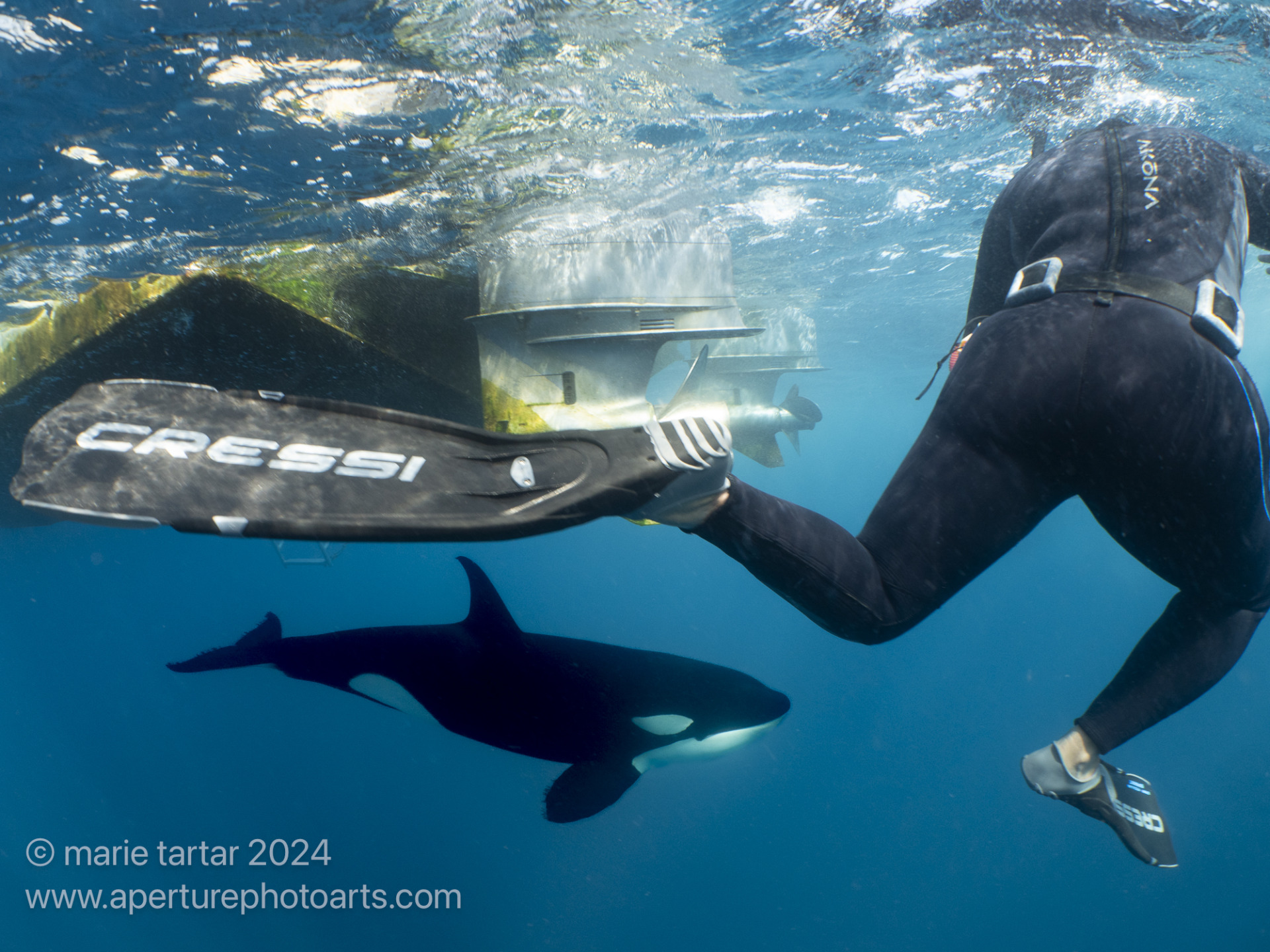
This orca in Baja’s Sea of Cortéz changed course and came right by our skiff, Nautilus’ Inde 2, as Mark looks on.
After hours on the water, even I, strenuously sun-avoiding as a rule and clad head to toe in neoprene, sported a bronze glow on my face. The afternoon was an amazing finale to a most enjoyable sea safari. Even before disembarking, we were plotting a return to Baja on the Gallant Lady in November 2026, hoping for similar success with marlins and bait balls in Magdalena Bay, on the Pacific side of the peninsula.
-Marie
Final tally (for reference for my future self): around $11 K USD, including $8440 (Gallant Lady week’s cruise for 2 people) + $300 hotel La Paz + $800 tips + $800 Volaris airfare for 2 + $150 (misc cab rides, tequila, dinner La Paz) + $240 transportation to/from CBX.

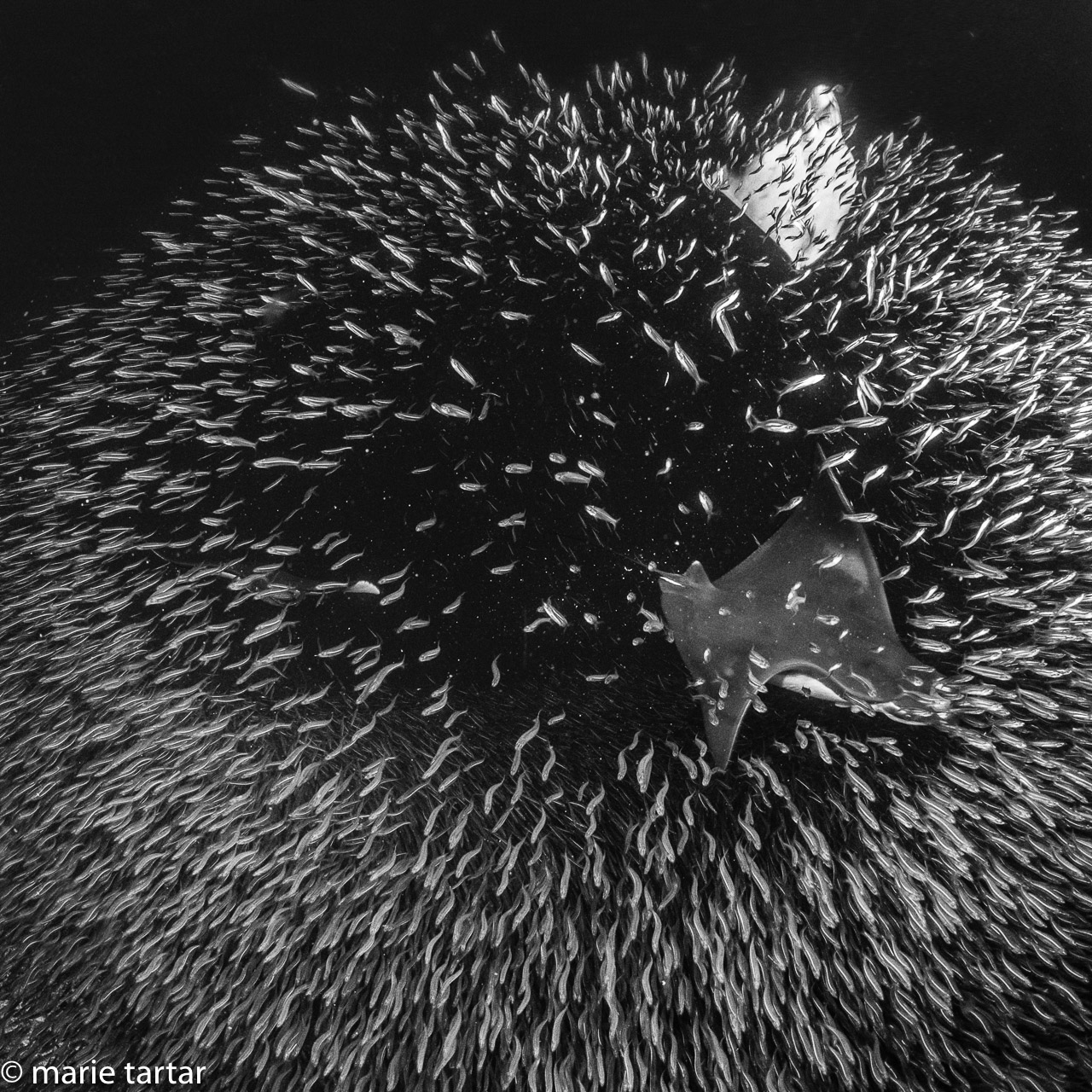
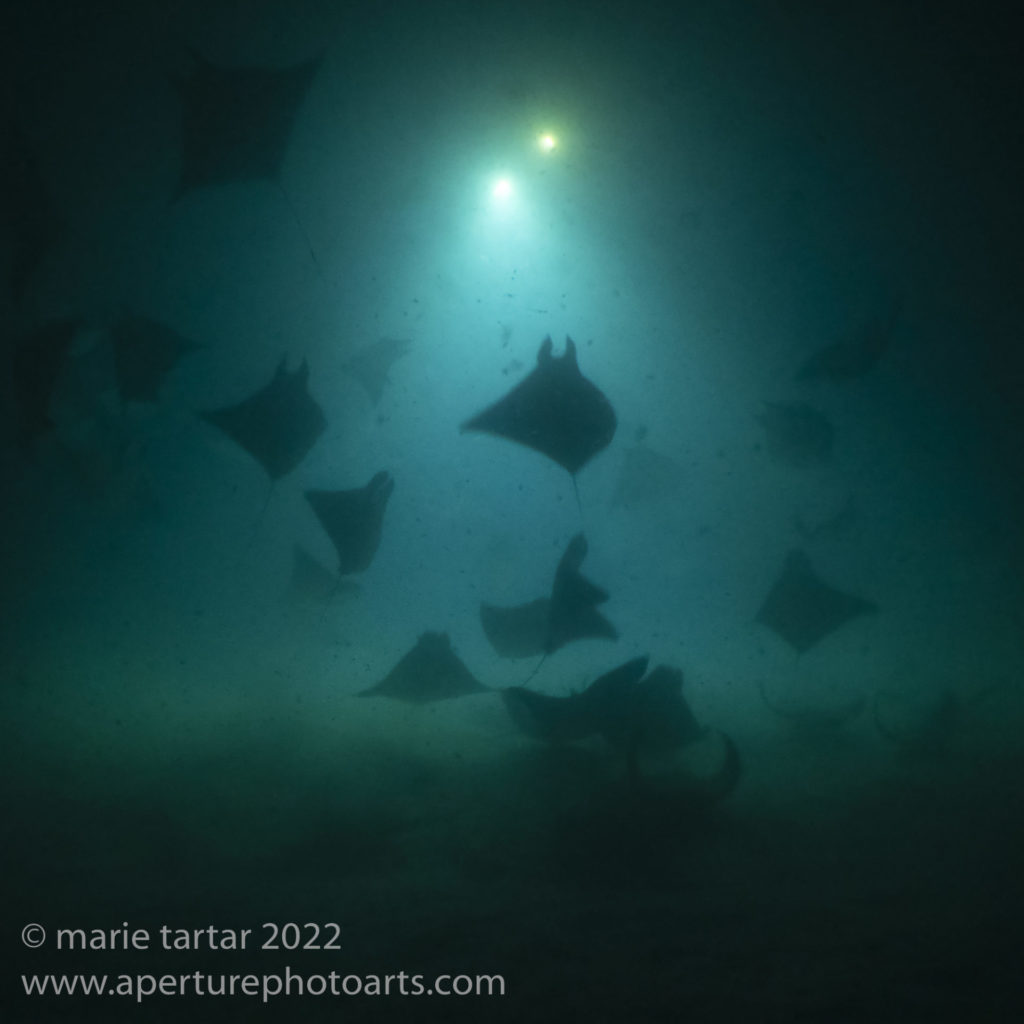
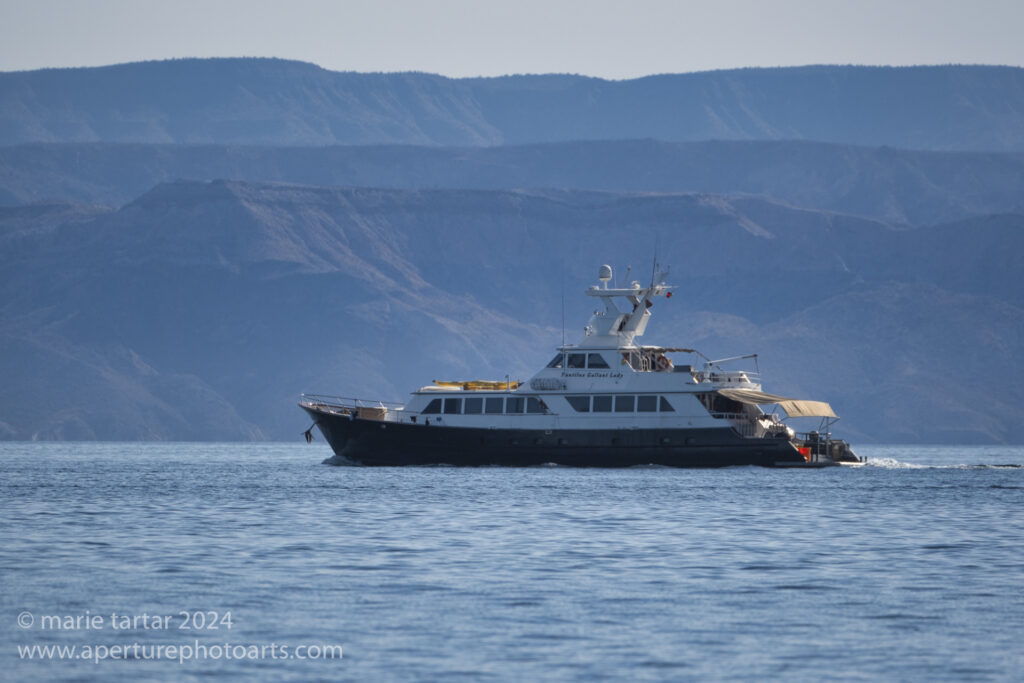
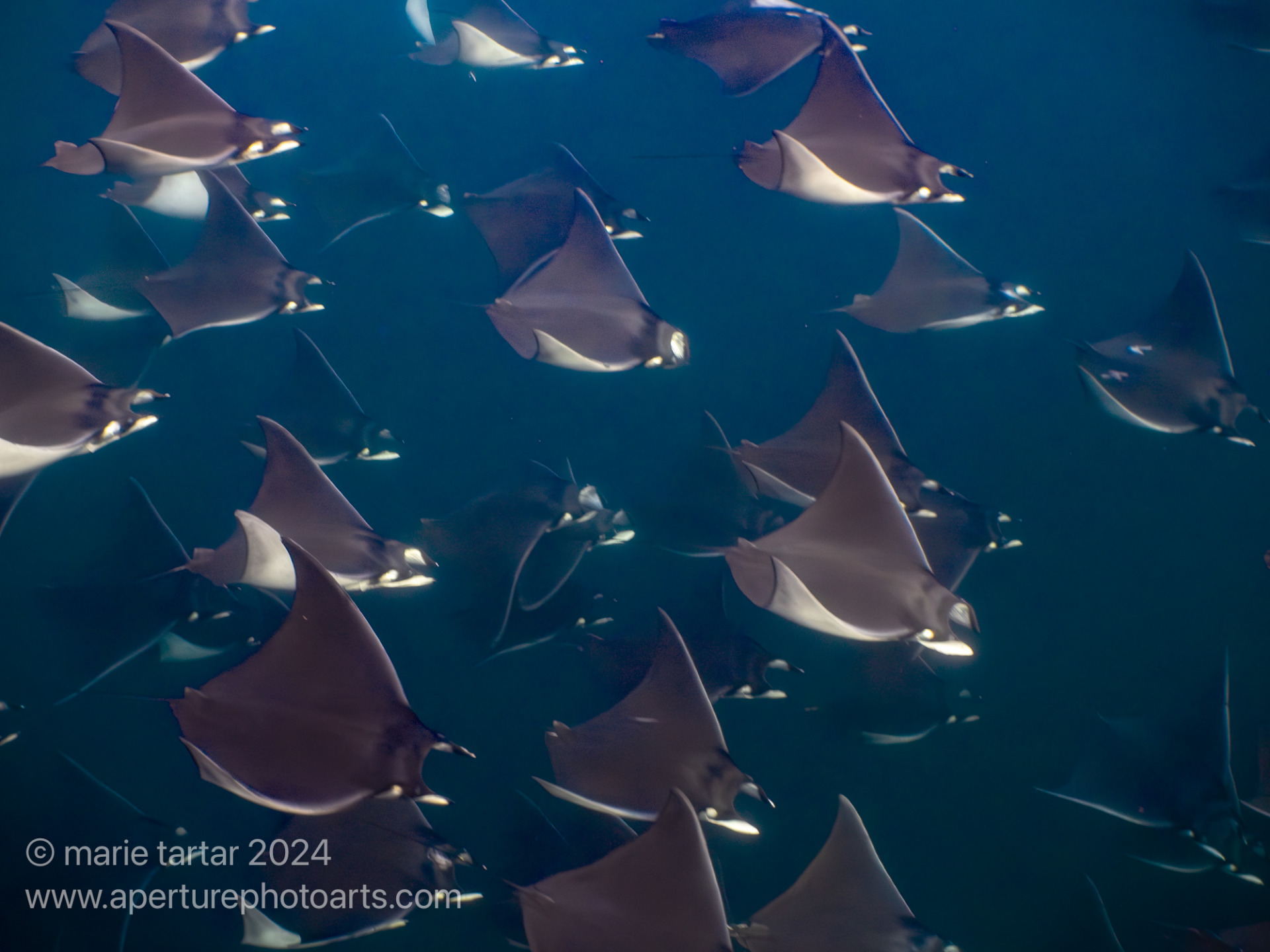
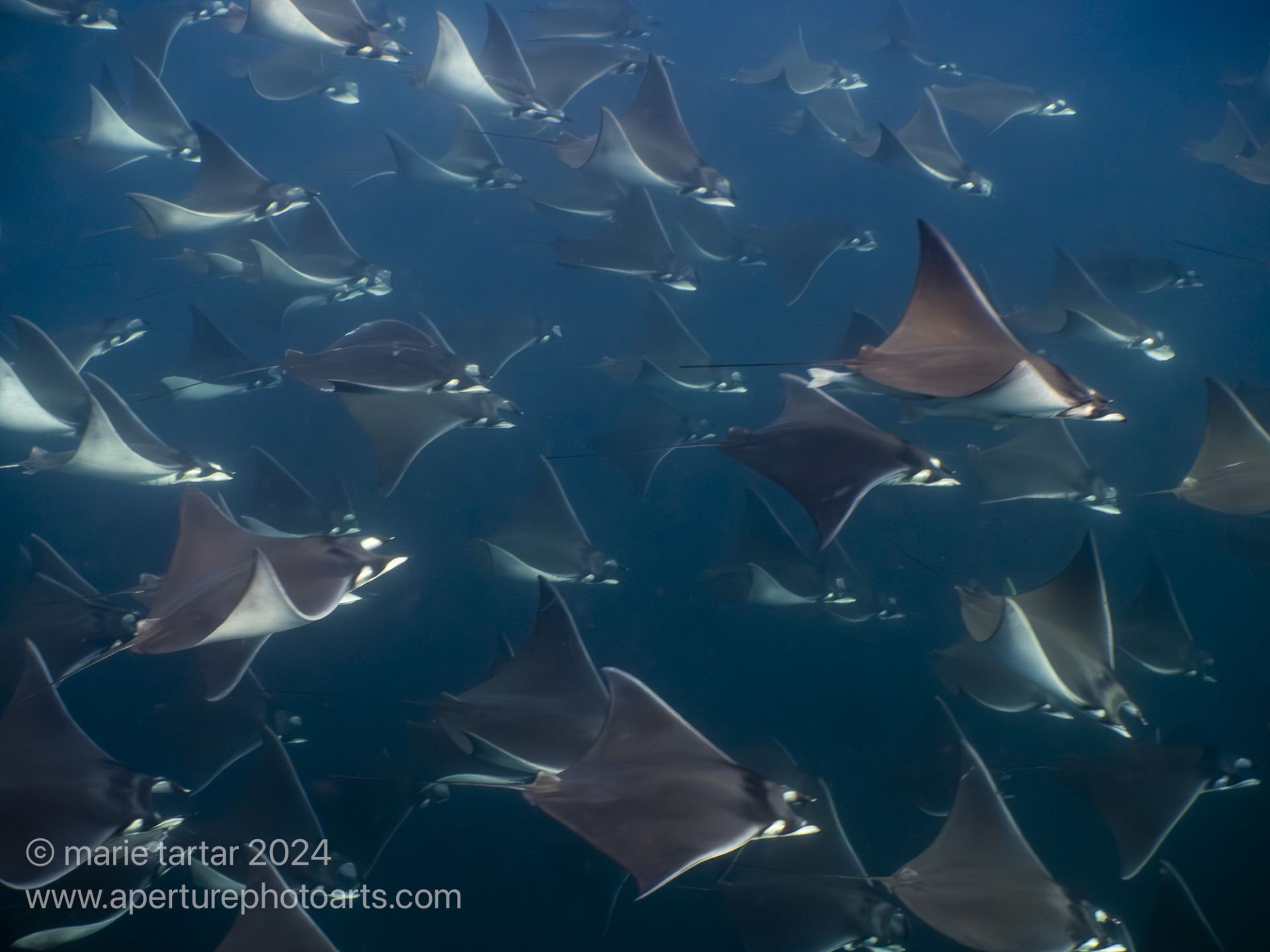
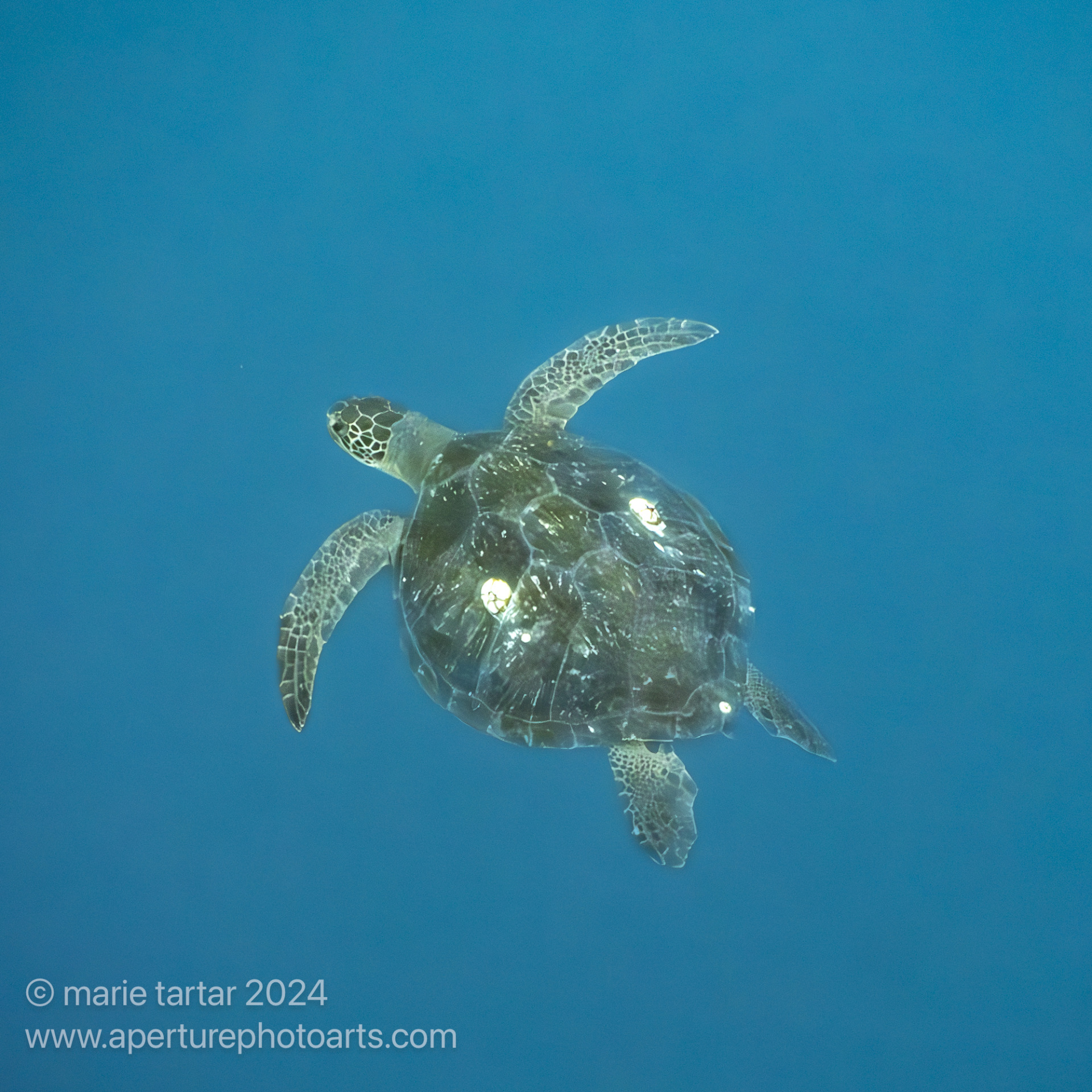
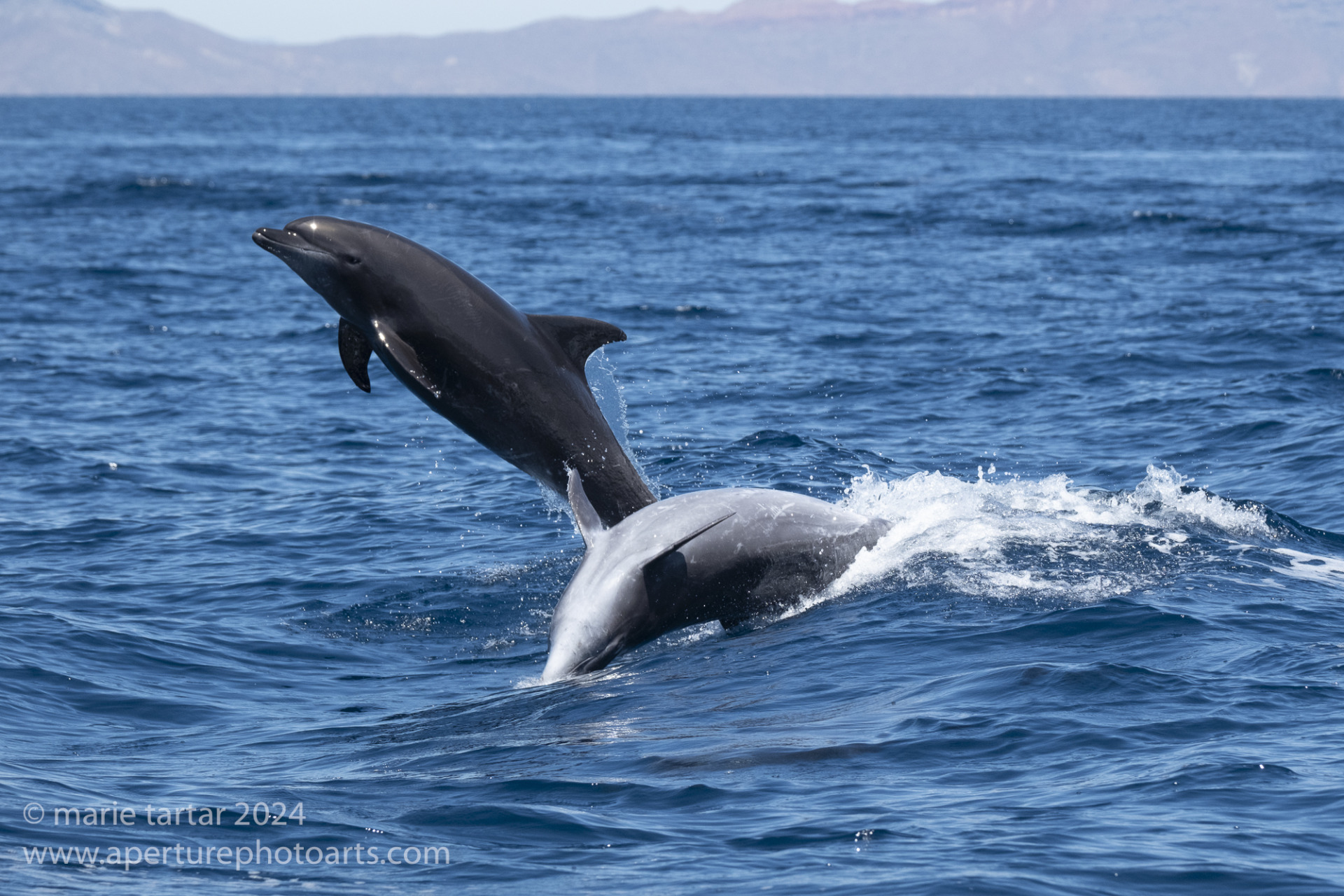


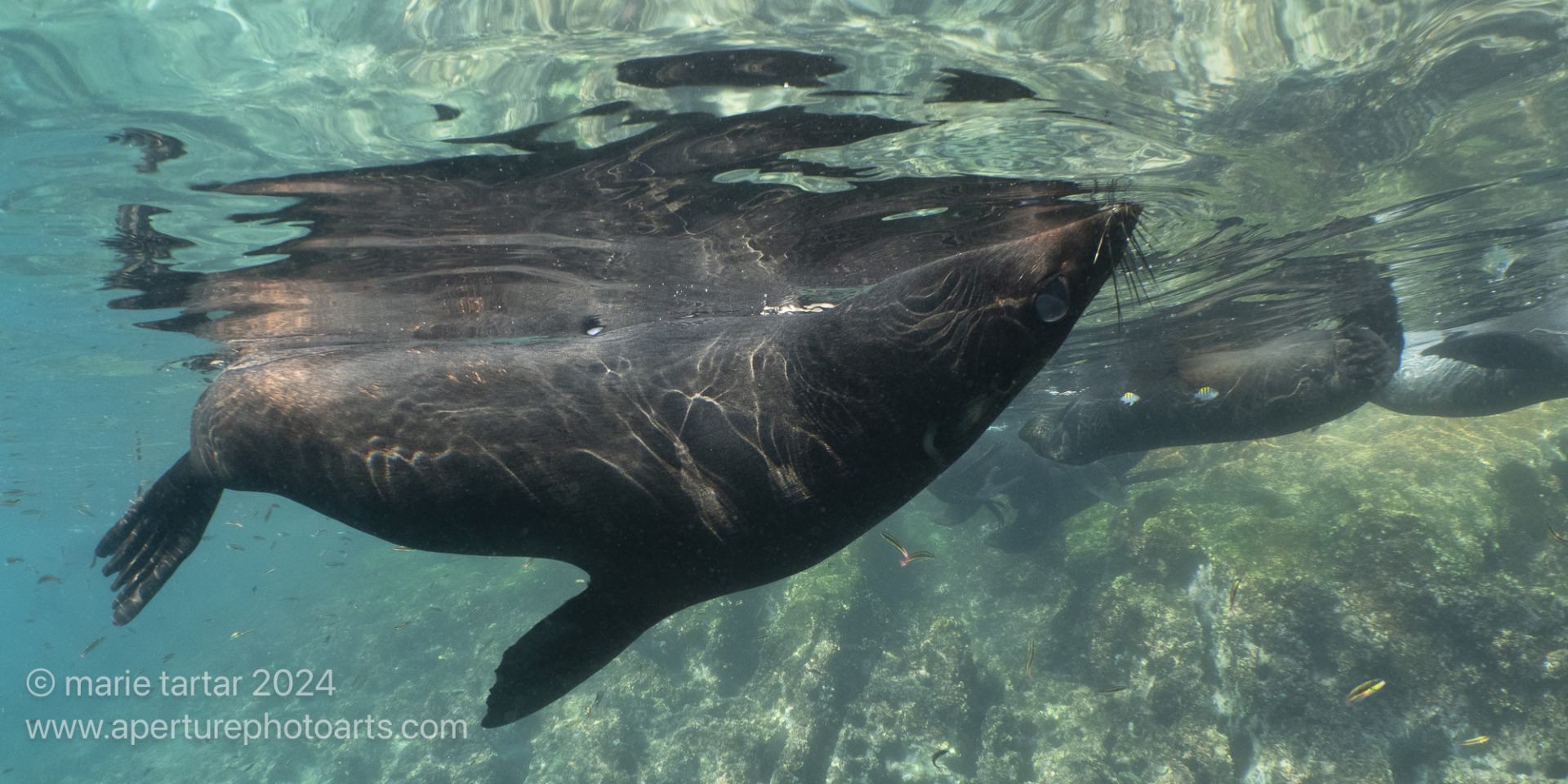
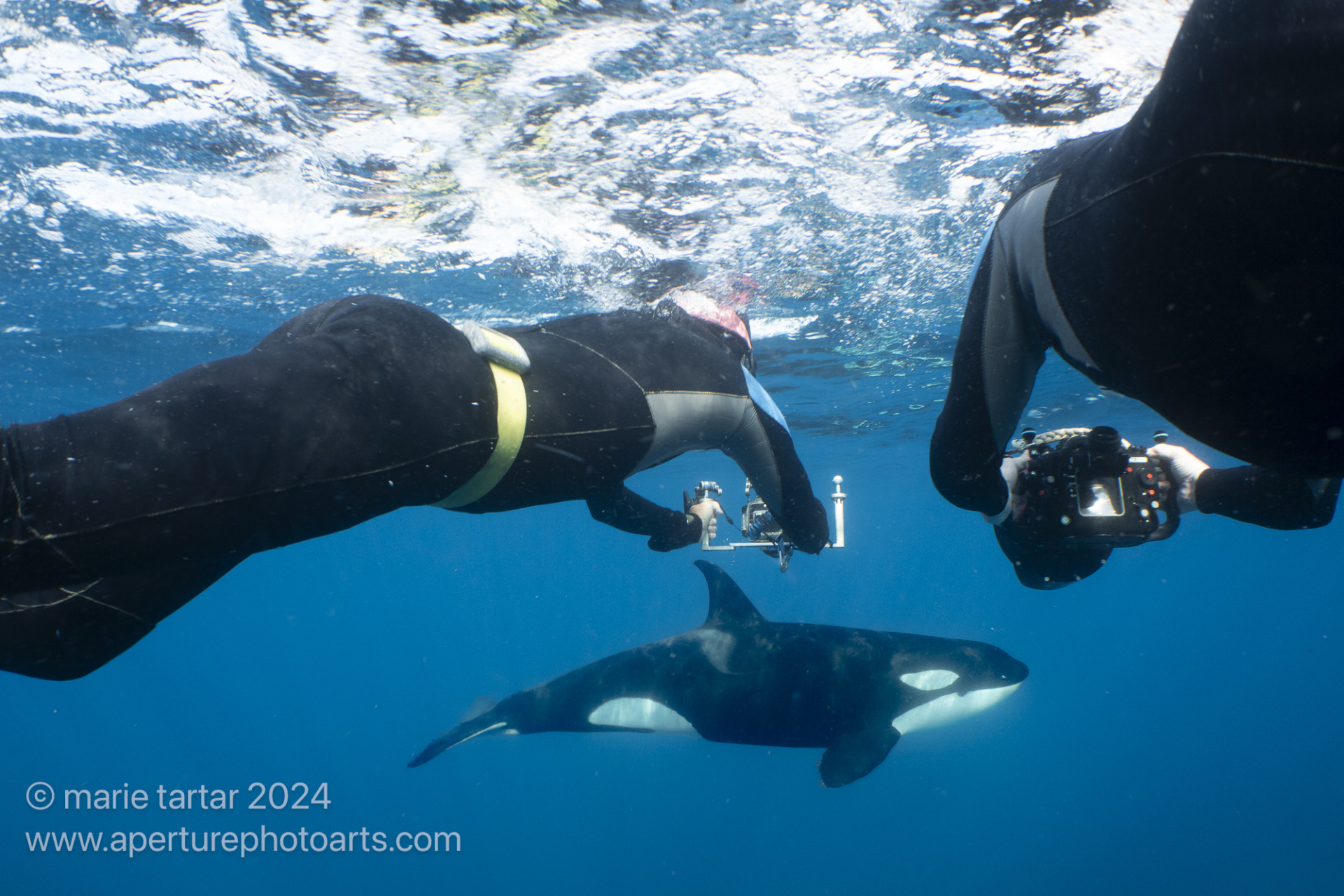
Such clear, bright water! Such batlike mobulas!
What a wonderful trip report (as always)! Your mobs of mobulas were delightful and the orca is amazing!
Marie,
What brilliant story telling you do! Gorgeous images as always!
I so love your blogs and your dedication to our marine life and your incredible photographic skills!
Thank YOU for joining!!!
Cindi 🙂